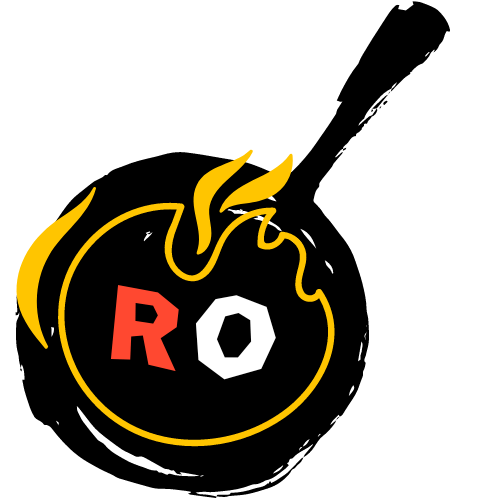Welcome to a comprehensive guide on effective menu design and optimization. This blog post will delve into the importance of a well-designed menu and how it can significantly impact your restaurant's success. We'll explore the psychology behind menu design, how to optimize your menu for maximum profit, and the latest trends in the industry.
The Importance of Menu Design
The menu serves as a silent salesperson in your restaurant. It communicates your brand, sets the tone for the dining experience, and ultimately influences what your customers order. A well-designed menu can increase your restaurant's profitability by guiding customers towards high-margin items.
The design of your menu goes beyond aesthetics. It involves strategic placement of items, effective categorization, and thoughtful pricing. It's about creating a balance between what your customers want and what is profitable for your business.
Understanding the psychology of menu design is crucial. People read menus in a particular way, and knowing this can help you position your dishes strategically. For instance, customers often look at the top right corner of the menu first. Placing your high-margin items here can increase their visibility and likelihood of being ordered.
Menu Optimization Techniques
Menu optimization involves tweaking your menu to increase profitability. This could mean highlighting your high-margin items, adjusting prices, or redesigning the layout. Here are some techniques to consider:
Item placement plays a significant role in what customers order. As mentioned earlier, the top right corner of the menu is a prime spot. However, the center of the menu also attracts attention. Consider placing your high-margin items in these areas.
Pricing is another crucial aspect of menu optimization. Avoid lining up your prices as it encourages customers to compare and choose cheaper items. Instead, incorporate the price into the description subtly.
The description of your dishes can also influence customers' choices. Use enticing and descriptive language to make your dishes sound irresistible. Highlight the unique ingredients or the cooking process to add value to the dish.
The Role of Design Elements in Menu Optimization
The design elements of your menu can significantly impact its effectiveness. These include colors, fonts, images, and layout.
Colors can evoke emotions and influence behavior. For instance, red and yellow stimulate appetite, while blue is calming. Use colors strategically to create the desired mood and guide customers' choices.
Fonts should be legible and align with your brand's personality. Avoid using too many different fonts as it can make the menu look cluttered.
Images can enhance the appeal of your dishes, but use them sparingly. Too many images can make your menu look cheap. High-quality, professional photos are a must if you choose to include images.
The layout of your menu should be clean and organized. Group related items together and use boxes or lines to separate different sections. This makes it easier for customers to navigate your menu.
Trends in Menu Design and Optimization
The world of menu design and optimization is ever-evolving. Staying abreast of the latest trends can give your restaurant a competitive edge.
One trend is the move towards simpler, more minimalist menus. This is in response to information overload and decision fatigue. A smaller, well-curated menu can enhance the dining experience and increase customer satisfaction.
Another trend is the use of technology in menu design. Digital menus are becoming increasingly popular. They allow for easy updates and can incorporate features like customer reviews and dish recommendations.
Sustainability is also a growing trend in the restaurant industry. This includes highlighting locally sourced ingredients on the menu and offering plant-based options. Customers are becoming more conscious of their food choices, and catering to this can set your restaurant apart.
Mistakes to Avoid in Menu Design and Optimization
While there are many strategies to enhance your menu, there are also pitfalls to avoid. Here are some common mistakes:
Overloading your menu with too many items can overwhelm customers and lead to decision fatigue. It can also strain your kitchen resources.
Ignoring the importance of menu psychology can result in missed opportunities. This includes neglecting the prime spots on your menu and not leveraging the power of enticing descriptions.
Failing to update your menu regularly can result in stale offerings and missed opportunities to capitalize on trends. Regular updates allow you to keep your menu fresh and relevant.
Implementing Changes and Measuring Success
Once you've optimized your menu, it's essential to monitor its performance. This involves tracking sales, customer feedback, and profitability.
Sales data can provide insights into which dishes are popular and which are not. This can guide your decisions on what to keep, what to tweak, and what to remove from your menu.
Customer feedback is invaluable. Listen to what your customers are saying about your dishes. Their feedback can help you improve your offerings and enhance the dining experience.
Profitability is the ultimate measure of success. Monitor your profit margins closely to ensure your menu optimization efforts are paying off.
Wrapping Up: Mastering Menu Design and Optimization
In conclusion, effective menu design and optimization is a powerful tool for boosting your restaurant's success. It involves understanding menu psychology, employing strategic placement and pricing, and leveraging design elements. Staying on top of industry trends and avoiding common pitfalls can further enhance your menu's effectiveness. Remember, the goal is not just to create a visually appealing menu, but one that guides your customers' choices and increases profitability.

